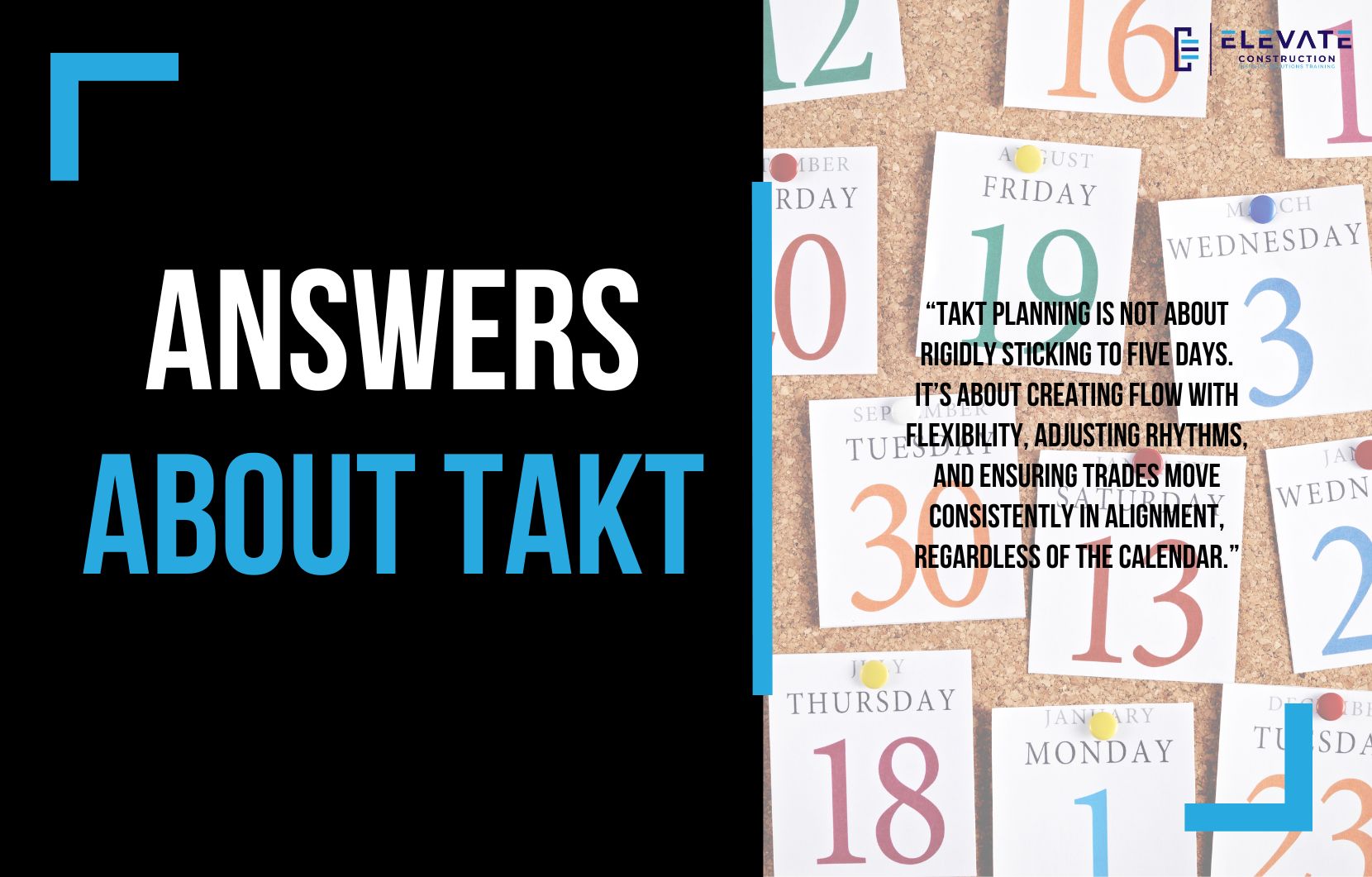Understanding Takt Planning Beyond Five Days
I recently received a thoughtful question from a YouTube commenter about Takt planning, and I wanted to take some time to unpack it. The question revolved around whether moving away from a five-day Takt time is like driving the same speed everywhere. It’s a great question because it highlights one of the most common misunderstandings about Takt planning.
The point I often make is this: you don’t have to lock yourself into a five-day Takt time. You can absolutely adjust, and in fact, the system is designed to allow for flexibility.
Why Flexibility Matters in Takt Planning
If you start with a five-day Takt time, that’s fine, but it’s not a rule. It’s a starting point. From there, you can optimize by adjusting to four days, three days, or even less depending on the work package design.
Think of it like driving a car. You don’t always drive at one speed; you adjust based on the conditions of the road. Similarly, in Takt planning, you can adjust your rhythm. A four-day Takt doesn’t mean four days of work plus a day of buffer that magically makes it a five-day Takt. It truly means four days of rhythm. At the end of the fourth day, the trades move forward to their next zone, even if that means shifting on a Thursday or a Friday.
The key is that Takt time gives us visibility. It shows us what it would take to get trades moving at the same speed, the same distance apart, in flow.
Multiple Trains, Multiple Speeds
Another misunderstanding is that all trades have to move at the same Takt time. They don’t. You can absolutely have multiple trains within the same Takt phase. Some trades may run at a two-day rhythm, others at a four-day rhythm. The framework allows you to visualize this, coordinate it, and make sure everyone is aligned.
For example, if you have a two-day task followed by a four-day task, you have options. You can split the longer task into multiple crews, run it as its own train, or even pull it out as a separate phase. What matters most is creating reliable flow, not forcing everyone into one rigid pace.
Why Weekends Shouldn’t Dictate Flow
One of the biggest pitfalls I see is when teams try to use weekends as their natural break points. That mindset pulls you back into a five-day Takt mentality. But in reality, Takt planning isn’t about weeks. It’s about rhythm. If trades need to move on a Wednesday or Thursday, that’s perfectly fine. Flow doesn’t care about the calendar, it cares about consistency.
When you force everything into a weekly box, you often introduce negative dynamics. Teams end up using weekends for recovery, which strains resources and masks deeper problems. The goal is not to survive the week but to establish a rhythm that works every single day.
The Bigger Picture
This is why I encourage anyone serious about mastering Takt planning to dive into resources like the books Takt Planning and Takt Steering and Control. Takt is the best system I know for giving maximum visibility to a project. It helps us plan realistically, optimize continuously, and create flow that benefits both the project and the people on it.
And like the commenter who inspired this discussion, I truly believe that those who take the time to learn and implement Takt in their regions will see remarkable results.
Key Takeaway
Takt planning is not about rigidly sticking to five days. It’s about creating flow with flexibility, adjusting rhythms, and ensuring trades move consistently in alignment, regardless of the calendar.
If you want to learn more we have:
-Takt Virtual Training: (Click here)
-Check out our YouTube channel for more info: (Click here)
-Listen to the Elevate Construction podcast: (Click here)
-Check out our training programs and certifications: (Click here)
-The Takt Book: (Click here)
Discover Jason’s Expertise:
Meet Jason Schroeder, the driving force behind Elevate Construction IST. As the company’s owner and principal consultant, he’s dedicated to taking construction to new heights. With a wealth of industry experience, he’s crafted the Field Engineer Boot Camp and Superintendent Boot Camp – intensive training programs engineered to cultivate top-tier leaders capable of steering their teams towards success. Jason’s vision? To expand his training initiatives across the nation, empowering construction firms to soar to unprecedented levels of excellence.
On we go

